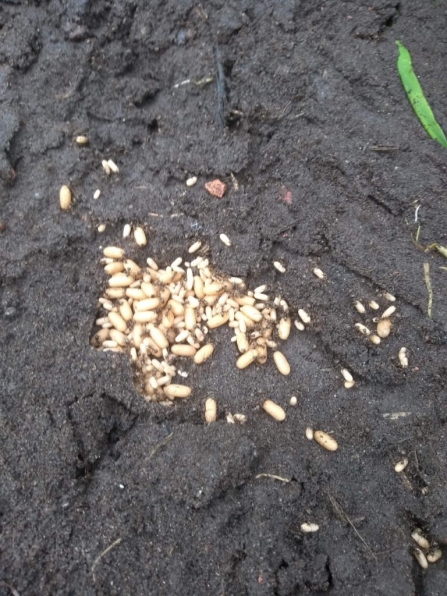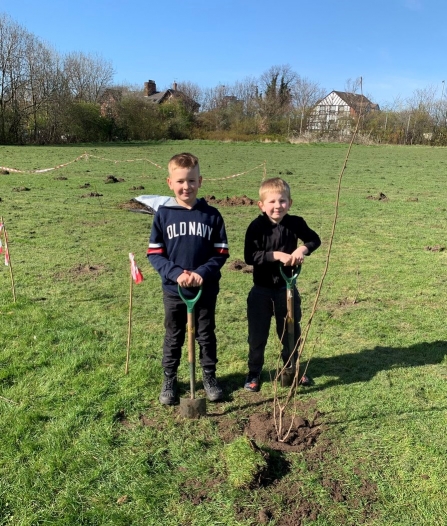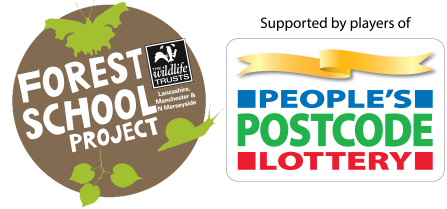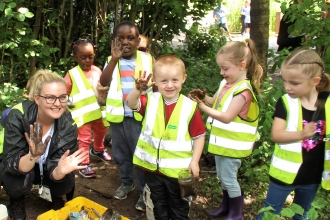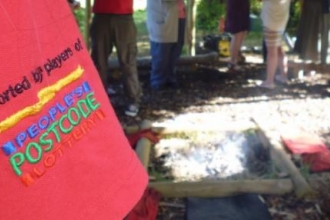After joining the Lancashire Wildlife Trust’s Forest School Project at the start of the year, Bedford Primary School in Bootle have been making a conscious effort to improve their school grounds, with the aim of creating an outdoor learning area that will be relaxing, inspiring to pupils and attractive to wildlife.
The school were fortunate enough to have a large playing field and a thin area of hawthorn trees, willow and lots of thick, spikey bramble bushes to separate the field from the main road, but it was an otherwise open, blank canvas. With a few simple but effective changes to the site it has been completely transformed over the year with lots of wildlife moving in. Since January, the children have had encounters with moths, bumblebees, ants, ladybirds, caterpillars, dunnocks and sparrowhawks to name just a selection of the diverse creatures who have visited us at Forest School.
So here’s a rundown of what they’ve done so far to turn their playing field into a beautiful, wild area for learning.


